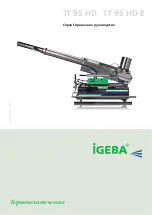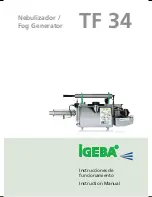
34
Instruction book/Manual de instrucciones 315, 325, 335
Fault-fi nding
Always start by checking the needle
• Always start with a new needle as soon
as you discover that a stitch is not what you
expected. Test sew on a scrap of the fabric
you are sewing. Check that you have chosen
the correct needle and see that it is correctly
inserted. See page 15.
Unattractive stitches
• The thread tension is not correct. See page 14.
• Make sure that the thread is not catching.
Cer-tain thread spools are unsuitable for
spooling from the horizontal spool pin. Try
instead with the vertical spool pin.
• The machine may be incorrectly threaded.
Be sure to place spool holders correctly.
The correct threading is shown on page 11.
• Wrong bobbin thread. It should be of the
same thickness as the upper thread.
The needle breaks
• You may have helped the machine to feed
by pulling the fabric. The needle can strike
against stitch plate and break. Change the
needle. See page 15.
The upper thread breaks
• Check the thread spool to see that it has
not caught in any way.
• The needle eye may have sharp edges
which cut the thread. If so, change the
needle. See page 15.
• The upper thread is incorrectly threaded.
See page 11.
• The upper thread may have too much ten-
sion. Refer to page 14.
The thread is knotted
• The hole in the stitch plate may be chipped
and have sharp edges. We recommend that
you replace it.
The bobbin thread breaks
• The bobbin thread may be incorrectly
threaded. See page 13.
• The stitch plate hole is damaged. See ”Up-
per thread breaks”.
Irregular bobbin winding
• This may be due to poor quality thread.
When sewing with cotton thread, increase the
thread tension.
Posibles averías
Controlar la aguja
• Cuando alguna vez una costura no sea satis-
factoria, comprobar con una aguja nueva en un
trozo de tela. Controlar que se haya elegi-do la
aguja correcta y asegurarse de que la aguja sea
introducida hasta su tope y que el tornillo está
apretado correctamente, véa pág. 15.
Puntadas falsas
• La tensión del hilo no es correcta, véa pág. 14.
• Asegúrarse que el hilo no está bloqueado.
Ciertos porta-carretes no son adecuados para
el devanado desde porta-carretes hori-zonta-
les. Por lo tanto, comprobar con un porta-car-
rete vertical.
• El enhebrado no es correc-to, verifi car
según la pág. 11.
• Hilo inferior in-adecuado. Este debe ser
igual que el superior.
Rotura de la aguja
• Nunca se debe tirar de la tela durante el
cosido, porque la aguja se puede romper al
tropezar contra la placa de aguja. Cambiar la
aguja, véa pág. 15.
Rotura del hilo superior
• Examinar el carrete del hilo y verifi car si el
hilo se ha enganchado en alguna parte.
• Podría ser que el agujero de la aguja no
estuviera lo sufi ciemente bien pulido. Cam-
biar la aguja, véa pág. 15.
• El hilo superior está mal enhebrado, véa
pág. 11.
• La tensión del hilo superior es demasiado
fuerte. Ver la ”Tensión del hilo”, pág. 14.
El hilo tiene nudos.
• El agujero de la placa de la aguja se ha
dañado por los continuos pinchazos de la
aguja. Lo mejor es cambiar la placa de aguja.
Rotura del hilo inferior
• El hilo inferior está mal enhebrado, véa
pág. 13.
• Se ha dañado el agujero de la placa de
aguja, ver arriba.
Bobinado irregular del hilo
• Puede ser a causa de la difi ciente calidad
del hilo. Al coser con un hilo de algodón,
aumentar la tensión del hilo.
Summary of Contents for VIKING Daisy 315
Page 1: ...K E E P I N G T H E W O R L D S E W I N G User s Guide Manual de instrucciones 315 325 335 ...
Page 37: ......
Page 38: ......
Page 39: ......







































